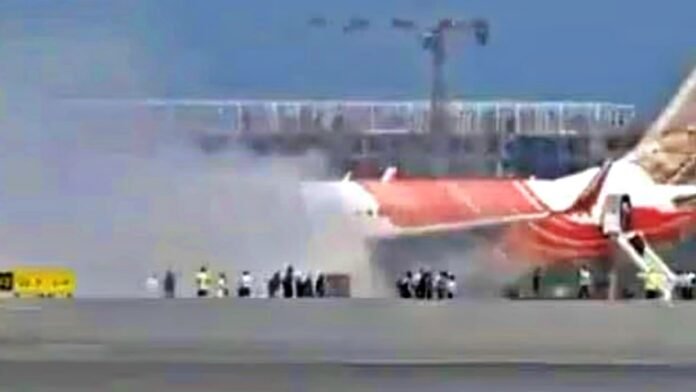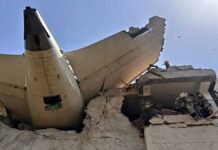
Key Points
- Air India Flight AI 315 from Hong Kong to Delhi caught fire upon landing on July 22, 2025, after an APU malfunction.
- All 210 passengers and crew safely disembarked with no injuries reported.
- Incident follows a deadly Air India Dreamliner crash last month; aviation safety under heightened scrutiny.
- DGCA ordered urgent checks of fuel control systems on Boeing 787 and 737 fleets across airlines; Air India confirms no issues found after inspection.
- The affected aircraft has been grounded for full investigation; aviation regulator informed as per protocol.
New Delhi: An Air India Boeing 787, operating as Flight AI 315 from Hong Kong, ignited an aviation scare after its auxiliary power unit (APU) caught fire moments after arriving at Delhi’s Indira Gandhi International Airport on Monday evening. The incident unfolded just as passengers had started disembarking the airport’s fire response teams and crew acted swiftly, ensuring everyone exited safely. No injuries have been reported, though the aircraft did sustain minor damage.
“Flight AI 315, operating from Hong Kong to Delhi on 22 July 2025, experienced an auxiliary power unit (APU) fire shortly after it had landed and parked at the gate. The incident occurred while passengers had begun disembarking, and the APU was automatically shut down as per system design. All passengers and crew members are safe,” said an Air India spokesperson.
The aircraft has been immediately grounded for a detailed probe, and India’s civil aviation regulator, the DGCA, has been duly notified.
What is an Auxiliary Power Unit (APU)?
The APU is a small engine located in the aircraft’s tail section. It provides electrical power and air conditioning when the main engines are off especially while boarding, disembarking, or in between flights. Though not related to flying the plane, an APU fire is a serious maintenance concern and is typically contained by automatic safety systems, as occurred in this incident.
String of Recent Safety Incidents Raises Questions
This event arrives just weeks after a devastating Air India tragedy when a Dreamliner (AI 171) crashed near Ahmedabad, killing 241 of the 242 passengers and another 19 people on the ground. The preliminary report from the Aircraft Accident Investigation Bureau (AAIB) indicated that both engines lost fuel supply seconds after liftoff, sparking intense scrutiny of maintenance and operating protocols across Indian fleets.
Following the Ahmedabad crash, the DGCA ordered all Indian airlines to urgently inspect the fuel control switch locking mechanisms in their Boeing 787 and 737 aircraft by July 21. These switches regulate engine fuel flow and are critical to in-flight safety. Air India confirmed on Tuesday that it completed precautionary checks across its fleets and found no issues.
Air India and Aviation Sector Strengthen Safety Measures
- Air India operates both Boeing 787 Dreamliners (long-haul) and Air India Express flies Boeing 737s (short- and medium-haul).
- All mandatory checks on the fuel control switches’ locking mechanisms have been carried out, according to DGCA directives. No anomalies have been detected, and aircraft cleared for continued operations.
Timeline of Recent Air India Incidents
| Date | Incident | Details / Outcome |
|---|---|---|
| June 12, 2025 | Dreamliner crash in Ahmedabad | 260 dead; fuel supply cut off |
| July 21, 2025 | Boeing 787 aborts takeoff in Delhi | Emergency stop, all safe |
| July 22, 2025 | AI 315 APU fire in Delhi | All safe; aircraft grounded |
The APU fire aboard AI 315 has amplified calls for stricter aviation oversight and transparency, particularly in light of the tragic Dreamliner crash just weeks before. While all passengers emerged unharmed from Monday’s fire, the frequency of recent incidents has kept regulators and airlines on alert to uphold the highest safety standards for Indian civil aviation.

















































